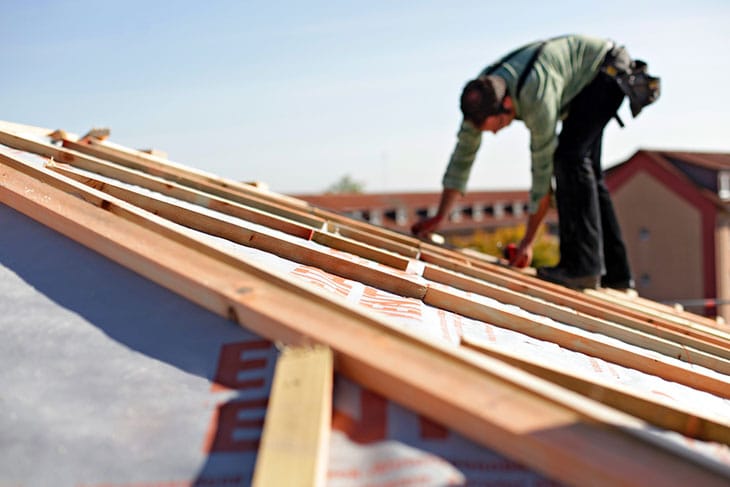Homeowners invest in new cabinets to update kitchen and bathroom spaces, improve storage, and increase property value. Whether your business specializes in full kitchen remodels, custom cabinetry, or refinishing and refacing, your success depends on connecting with homeowners ready to begin their projects.
This guide explains how cabinet installation professionals can generate qualified homeowner inquiries, strengthen local visibility, and measure ROI from their marketing efforts.
- What Is a Cabinet Lead and Why Does It Matter?
- How Can Cabinet Contractors Attract Local Leads Online?
- Are Lead Generation Services Worth It for Cabinet Companies?
- How Quickly Should Contractors Respond to Cabinet Leads?
- How Do Cabinet Contractors Measure ROI from Lead Generation?
- What Types of Cabinet Projects Are Most In Demand?
- What Trends Are Driving Cabinet Installation Demand?
- Key Takeaways
- FAQ: Everything You Need to Know About Cabinet Leads
What Is a Cabinet Lead and Why Does It Matter?
A cabinet lead is a homeowner actively researching or requesting quotes for cabinet installation, refacing, or repair. These leads are typically high intent because cabinet projects often accompany kitchen or bath remodels — two of the most valuable home improvement investments.
Access to verified cabinet leads helps contractors and remodelers maintain consistent workflow and balance seasonal demand. Whether you focus on custom wood designs, pre-fabricated units, or full remodel projects, every qualified lead represents an opportunity to win high-value business.
To understand how Modernize evaluates and prices homeowner leads, see How Much Do Modernize Leads Cost.

How Can Cabinet Contractors Attract Local Leads Online?
Homeowners searching for “kitchen cabinet installers near me” or “bathroom cabinet refacing” often start online to compare styles, prices, and contractors. To capture this interest:
- Optimize for local SEO: Include service and city keywords such as “custom cabinet installation in [City]” or “cabinet refinishing near me.”
- Maintain your Google Business Profile: Keep photos, reviews, and contact details up to date.
- Encourage online reviews: Positive customer feedback builds trust and improves local rankings.
- Publish helpful content: Blog about topics like “cabinet refacing vs. replacement,” “how much do new kitchen cabinets cost,” or “trends in modern kitchen design.”
- Showcase your portfolio: Share before-and-after images of completed kitchens or bathrooms to demonstrate craftsmanship.
Strong online visibility ensures your business appears when homeowners are ready to request estimates.
Are Lead Generation Services Worth It for Cabinet Companies?
Lead generation services can help cabinet contractors supplement organic marketing by connecting them directly with verified homeowners seeking installation or remodeling projects. The most effective programs provide:
- Transparent pricing and flexible budgets
- Verified homeowner data
- Real-time lead delivery
- Project-specific targeting by material, room type, or location
- Reporting tools to track conversions and ROI
Before purchasing leads, evaluate how providers verify homeowner intent, filter by project type, and match by geography.
For more insight into Modernize’s process, see What to Expect When You Sign Up for Modernize Leads.
How Quickly Should Contractors Respond to Cabinet Leads?
Homeowners comparing multiple quotes typically hire the contractor who responds first. Quick outreach builds trust and positions your company as reliable and professional.
To improve your close rate:
- Respond to new leads within minutes.
- Use CRM notifications or automated alerts to ensure no opportunities are missed.
- Personalize your outreach by mentioning the homeowner’s cabinet preferences, timeline, or remodel goals.
For more response tips, see Modernize’s Guide to Lead Follow-Up Best Practices.
.
How Do Cabinet Contractors Measure ROI from Lead Generation?
Tracking performance data helps you identify which marketing efforts produce the best results:
- Cost per lead (CPL): The amount spent to acquire each new inquiry.
- Conversion rate: The percentage of leads that become booked estimates or signed contracts.
- Average project value: Typical revenue per installation or refacing project.
- Return on ad spend (ROAS): Overall marketing profitability.
To learn how Modernize helps contractors analyze performance data, explore the Modernize Data Feedback Loop.
What Types of Cabinet Projects Are Most In Demand?
Understanding which cabinet services homeowners request most often helps you refine your offerings and target your messaging:
- Kitchen Cabinet Replacement: Full remodels or upgrades; typically $8,000–$25,000.
- Cabinet Refacing: A budget-friendly refresh averaging $5,000–$10,000.
- Custom Cabinets: Luxury designs tailored to space and style; $15,000–$40,000+.
- Bathroom Vanities: Compact but profitable; $2,000–$6,000.
- Built-In Storage: Home offices, mudrooms, or media centers; $4,000–$12,000.
What Trends Are Driving Cabinet Installation Demand?
Several homeowner and market trends continue to fuel demand for cabinet projects:
- Sustainability: Eco-friendly and recycled materials are increasingly popular.
- Customization: Homeowners want personalized designs and smart storage.
- Modern design: Sleek, minimalist cabinets with clean lines remain in demand.
- Technology integration: Hidden lighting, soft-close drawers, and smart features add functionality.
- Resale value: Updated cabinetry consistently ranks among top ROI home improvements in the Remodeling Cost vs. Value Report.
By aligning your services with these homeowner priorities, your business can attract design-conscious, high-intent leads.
Key Takeaways
- Cabinet leads connect contractors with homeowners planning kitchen and bathroom upgrades.
- Local SEO, verified reviews, and rapid follow-up improve conversion rates.
- Tracking CPL, conversion rate, and project value helps refine your marketing spend.
- Customization, sustainability, and modern design continue to drive demand.



